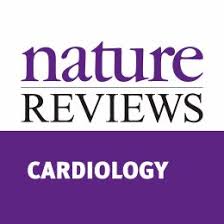According to the latest statistics of the American Heart Association (AHA), death rates attributable to cardiovascular diseases (CVD) have declined by 28.8% from 2003 to 2013 [1]. Over the same period, the number of CVD deaths per year has declined by 11.7%. Despite these encouraging news, CVD still accounts for 31% of all deaths in the United States and remains the leading cause of mortality. Several factors are associated with this progress and include, among others, the decrease in the prevalence of smoking and exposure to second-hand smoke, the reduction in cholesterol levels and blood pressure at the population level with powerful pharmacotherapies, a better understanding of the symptoms, the improvement of the paramedic/rapid-response systems and the progress in emergency departments and in-hospital therapies [2, 3]. However, it should be kept in mind that the CVD morbidity curve (nonfatal cardiovascular events) has shown a different pattern where a dramatic decrease was not simultaneously observed [4]. This phenomenon could be explained by the improvement of our detection methods (increased sensitivity) and a higher survival rate. Moreover, in this population of patients afflicted with CVD, the disease will evolve into complications such as heart failure and type 2 diabetes. This situation represents a major challenge for our health care system already facing prohibitive costs.
It is also important to underline that although CVD mortality has decreased, the prevalence of unhealthy lifestyle habits is very high. A significant proportion of the population is not sufficiently physically active and has also adopted very sedentary behaviours (TV and screen time) while consuming a diet of poor nutritional quality loaded with added sugar, salt and unhealthy fats. Thus, the prevalence of overweight and obesity has reached epidemic proportions in the United States [1] and in many countries worldwide [5].
In response to this alarming evidence, the AHA, in the process of developing its 2020 goals, needed to develop simple but discriminating criteria that would objectively assess ideal cardiovascular health and, as a result, the prevalence of Americans without biological risk factors and with healthy lifestyle habits [6]. These criteria include three “biological” risk factors (cholesterol, blood pressure, fasting glucose) and four markers of lifestyle (physical activity, diet, body mass index, smoking) giving a total of seven ideal health indicators. This definition of ideal cardiovascular health represents a new paradigm since it shifts the focus from the traditional concept of primary prevention (prevention of CVD through the identification and treatment of risk factors) to “primordial” prevention (avoid the development of CVD risk factors by adopting healthy lifestyle habits).
With the introduction of this concept, the prevalence of ideal cardiovascular health could be quantified in several studies and published results are rather shocking. For instance, a manuscript published in Nature Reviews Cardiology by Andersson and Vasan examined this issue with a special emphasis on young adults aged 18-45 years [7]. Several key points could be made from their analyses. First, over the past two decades young adults have developed unhealthy risk factors, particularly unhealthy lifestyle factors, which include obesity, poor diet and insufficient physical activity. Moreover, as opposed to older individuals, trends in incident CVD, especially heart failure, have increased or plateaued in the past decades. A very low proportion of the American population meets the criteria of ideal cardiovascular health. Current data even suggest a new epidemic of CVD among young individuals in the coming years.
This work suggests that beyond the identification and treatment of risk factors (primary prevention), we should also focus on measures that would increase the proportion of individuals without risk factors, bringing the notion of “primordial” prevention forward. In this regard, it should be emphasized that solutions and approaches that will enable us to shift the distribution of risk factors and lifestyle habits are complex as they must involve many “actors” (kinesiologists, nutritionists, behaviour specialists, media, education, use of information and other technologies, socio-economic factors, workplace, built environment, policies, etc.) beyond the traditional medical model. It is more than urgent to intervene and propose several actions that will positively impact lifestyle habits and ultimately CVD risk and other chronic societal cardiometabolic diseases in individuals of all ages but especially in the young segment of the population.
At the International Chair on Cardiometabolic Risk, we propose to work on three pillars of lifestyle habits in order to optimize global health and achieve ideal cardiovascular health: Eat well, drink well, move! Furthermore, we propose that the gap between the clinical model and population-based approaches should be filled in order to develop integrated and coordinated solutions.
References
- Writing Group M, Mozaffarian D, Benjamin EJ, et al. Executive Summary: Heart Disease and Stroke Statistics–2016 Update: A Report From the American Heart Association. Circulation 2016; 133: 447-454. PubMed ID: 26811276
- Ford ES, Ajani UA, Croft JB, et al. Explaining the decrease in U.S. deaths from coronary disease, 1980-2000. N Engl J Med 2007; 356: 2388-2398. PubMed ID: 17554120
- Wijeysundera HC, Machado M, Farahati F, et al. Association of temporal trends in risk factors and treatment uptake with coronary heart disease mortality, 1994-2005. JAMA 2010; 303: 1841-1847. PubMed ID: 20460623
- Mozaffarian D. Achieving cardiovascular health: a bleak outlook or tremendous potential? J Am Coll Cardiol 2011; 57: 1697-1699. PubMed ID: 21492768
- Global BMI Mortality Collaboration, Di Angelantonio E, Bhupathiraju Sh N, et al. Body-mass index and all-cause mortality: individual-participant-data meta-analysis of 239 prospective studies in four continents. Lancet 2016; 388: 776-786. PubMed ID: 27423262
- Lloyd-Jones DM, Hong Y, Labarthe D, et al. Defining and setting national goals for cardiovascular health promotion and disease reduction: the American Heart Association’s strategic Impact Goal through 2020 and beyond. Circulation 2010; 121: 586-613. PubMed ID: 20089546
- Andersson C, Vasan RS. Epidemiology of cardiovascular disease in young individuals. Nat Rev Cardiol 2017; 15: 230-240. PubMed ID: 29022571

